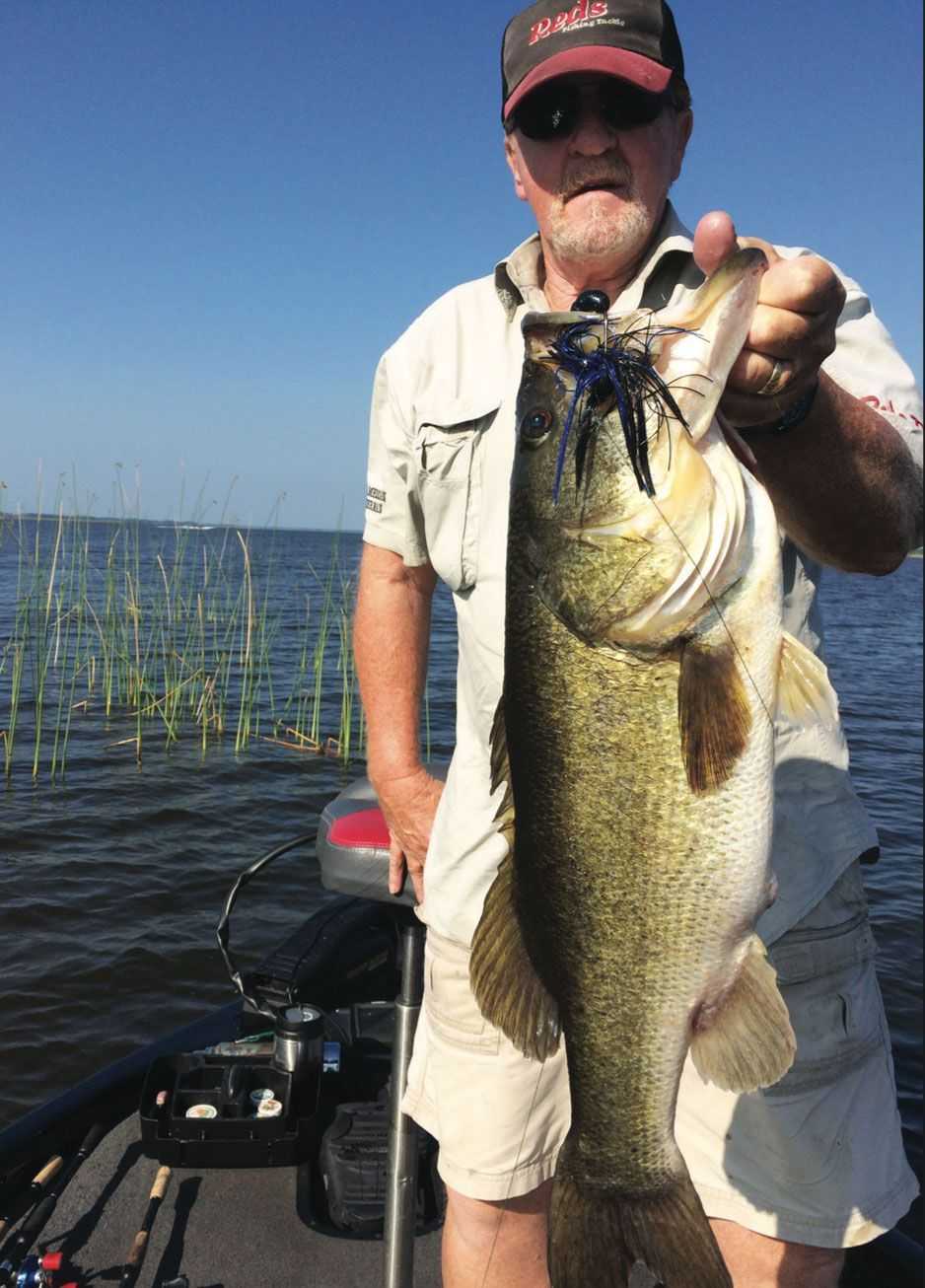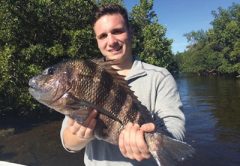Earlier this month, on a bass fishing guide trip to Lake Istokpoga, we managed to catch two good-sized largemouth bass. They weren’t giants, or in my opinion even trophy catches, but at 7.14 and 8.9 pounds, they were looked upon as real wall-hangers by my clients from Wisconsin.
Both bass were caught on a black blue 3⁄4 ounce Medlock Jig with a black blue Sweet Beaver trailer. We caught other bass that day, but these two were considerably larger. Pictures were taken and the fish were released as quickly as possible with the hope that they would survive and provide a future opportunity for another fisherman down the road.
A few days later, I was talking with some fishermen at the boat ramp and one of them said we should have just kept the bigger bass because they were probably just going to die anyway. According to this fisherman, once bass reach this size and larger, they are probably only months away from dying of old age, and the stress of catching them would simply be too much for them to handle. He said he had read somewhere that anytime you catch a big bass, you should just keep it.
I reminded him that with the slot limit on Lake Istokpoga, these fish may have lacked the length to allow the fishermen to keep them, but even if they did measure long enough, I didn’t believe that they would die of old age after they were released.
The fishermen agreed, and indicated that the article he read was probably geared more towards giant bass of 10-12 pounds, but I still didn’t buy into it. Then by chance, last week I happened to be reading an article in the July 2015 edition of In-Fisherman magazine by Steve Quinn that I thought might help to dispel what that fisherman read, and others may believe.
To quote Quinn’s article, “Over the years, In-Fisherman has promoted the release of extra-large fish of various species. Some anglers, however, have countered that these unusually large specimens are extremely old, likely near death, and unlikely to be caught again, or to spawn again.
Data from Texas Parks & Wildlife Department’s ShareLunker Program sheds light on the future of giant bass that are released. The program accepts largemouths over 13 pounds caught between October and April, hoping to spawn them and stock offspring in waterways. Once the spawn is done, the angler releases the bass back into the lake and receives a replica mount. Over the years, at least a dozen of these lunkers have been caught again. At Lake Alan Henry, a 13-pounder was caught in three consecutive years while it remained virtually unchanged in size. Another bass from Lake Fork added almost 1 3⁄4 pounds in less than a year, pushing it over the 15 pound mark. Texas ShareLunker records include only bass caught in the winter-spring collection period, so other ShareLunkers have likely been caught at other times. And in some cases, bass just over 13 pounds lose weight from one year to the next and are no longer eligible, and generally are not recorded. One such bass was caught at Lake Athens in March 2015, weighing 12.94 pounds. The year before it had weighed 13.67 when caught in January, and was spawned at the Athens hatchery and released.”
I believe this article proves my point – that large fish, if properly cared for and released, will not only continue to live, and in some cases grow even larger, but can and often are caught again.
And since I’m on this subject, if you should happen to catch a lunker bass, particularly a giant and you are interested in entering it into Florida’s TrophyCatch Program, please be mindful of the harmful effects of keeping it in your live well for any length of time. Even smaller bass will not survive, particularly during the hot summer months in a live well even though it may be properly aerated. Water temperatures in most live wells exceed 90 to 100 degrees during summer, depleting the oxygen content of the water and providing un-recoverable conditions for bass.
In this area of Florida, I recommend that you always carry a gallon or at the very least, a couple quarts of ice that can be introduced into the live well to keep the water at a cooler temperature. Gallon and quart milk containers work extremely well and should you catch that bass-of-a-lifetime, preventing the water from over-heating will assist in maintaining the bass’s health and allow for a safe release later in the day.
This is not only a practice recommended to every fisherman, but specifically to tournament bass fishermen. Although most tournaments are not held during the hottest months of the year in Florida, there are some tournaments held throughout the summer and in my opinion, ice containers should be required for every participant. They are equally as important as kill-switches, life preservers and other safety equipment required by law. I’ve participated in many tournaments, even during the cooler months of the year when guys show up for the weigh-in with bags of dead fish. Most tournaments allow an angler or a team to catch and weigh-in 5 bass. In a heated live well; their chances for survival are slim to none.
So let’s all do a better job of protecting this incredible species of fish and giving the few big one’s we catch an opportunity to grow even larger and thrill another fisherman in the future.







